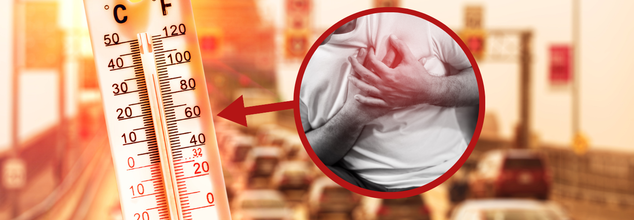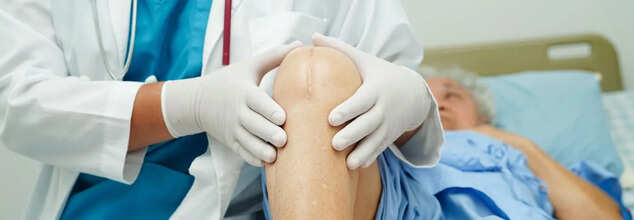
Credit: Canva
9 Healthy Condiments Revealed—A Few Might Surprise You
Condiments often get a bad rap in the world of healthy eating, but experts suggest it's time to reconsider that stance. While many people feel their meals are incomplete without the familiar kick of ketchup, mayo, mustard, soy sauce, ranch, or hot sauce, not all of these additions are detrimental to health. In fact, some might even enhance the nutritional profile of your meals.
"I would way rather folks add a condiment that really brightens their day and makes their food enjoyable than for them to swear off that food entirely," registered dietitian Abbey Sharp told USA Today. "If ranch is the only way that you’re going to eat vegetables, by all means, you should be adding ranch."
While many assume that condiments only add empty calories or sodium, some health professionals believe that the right choices can contribute positively to your diet. The trick lies in selecting those with fewer additives and better nutritional value.
Choosing the lowest-calorie condiment may seem wise, but calories aren't the only factor to consider. Some condiments, though low in calories, are packed with artificial additives, sodium, and sugar—ingredients that can elevate the risk of high blood pressure, stroke, and heart disease. On the other hand, healthier condiments often contain little added sugar and are rich in fiber, protein, and healthy fats.
Abbey Sharp warns against blindly choosing products labeled "fat-free" or "low-fat," as these can be loaded with sugar and salt to compensate for lost flavor. Instead, she recommends looking for items with shorter, simpler ingredient lists.
Homemade condiments are generally less processed and lower in calories, but plenty of store-bought options can also be healthy if you check the labels carefully. Experts have highlighted several condiments that offer both flavor and nutrition:
Pesto — Made with olive oil, Parmesan, basil, and pine nuts, pesto is not only flavorful but also a good source of zinc, supporting immunity and metabolism.
Mustard — While mustard is low in calories (about six per 10 grams), it often contains turmeric, which has anti-inflammatory and antioxidant properties. However, it can be high in sodium, so moderation is key.
Guacamole — Rich in fiber, potassium, and healthy fats from avocados, guacamole can enhance satiety and overall nutrition. Sharp calls it her favorite condiment.
Balsamic Vinegar — Made from grapes, balsamic vinegar is packed with antioxidants that may protect cells and reduce heart disease risk.
Soy Sauce — Due to its high sodium content, consider making a homemade version using low-sodium vegetable broth, vinegar, brown sugar, and spices.
Tomato-Based Sauces — Tomatoes offer potassium, lycopene, and other nutrients. Homemade ketchup or salsa can reduce added sugar intake and avoid high-fructose corn syrup.
Hummus — A blend of chickpeas, tahini, garlic, and olive oil, hummus provides protein, fiber, and healthy fats.
Hot Sauce — Often containing just peppers, salt, and vinegar, hot sauce can support gut health and digestion—though sodium remains a concern.
Tahini — Ground sesame seeds provide plant-based protein and selenium, which supports brain and immune health. Just two tablespoons supply 10% of an adult’s daily protein needs.

(Credit-Canva)
Heatwaves Could Increase The Risk Of Cardiovascular Diseases
With peak summer months fast approaching, one must make the necessary changes to their lifestyle habits to suit the heat. This heat can affect people in many ways. Whether it is what kind of food you eat, your daily commute and other activities.
Another cause of concern for people now is how this heat could affect their heart. A new study published in the Journal of the American College of Cardiology April 2025, showed that when it's really hot both during the day and at night, more people die from heart problems. This kind of heat is much more dangerous for your heart than just being hot during the day or just at night. Researchers found that when it's hot all the time, it puts a lot of extra stress on people's hearts, making it more likely for them to have serious problems and even die. This means we need to think differently about how we handle very hot weather to keep people safe, especially those who already have heart issues.
To learn this, the scientists looked at information about almost two and a half million people who died from heart problems in China over several years. They compared when these deaths happened to how hot it was at every hour of the day and night. They found that when there was a compound heatwave, the chance of dying from a heart problem kept going up. However, when it was only hot during the day or only at night, the risk would go up and then come down a bit. This shows that constant heat puts ongoing stress on the heart.
Why Does The Heat Impact The Heart?
When temperatures rise, your body cleverly uses your circulatory system to release heat. Blood vessels near the skin's surface widen, and your heart beats faster, increasing blood flow by two to four times its normal rate, according to Cleveland Clinic.
The study showed that if there's a heatwave that doesn't cool down at night, people are much more likely to die from heart problems. The chance goes up by a huge 86%. This is much higher than if it's only hot during the day, where the risk goes up by only 19%. It's also much higher than if it's only hot at night, which has a 16% higher risk. This clearly shows that when the heat doesn't stop, it's much harder on our hearts and can be deadly for people with heart conditions.
The study also found that certain kinds of heart problems were much more likely to cause death during compound heatwaves. Things like sudden heart stopping, heart attacks, and heart failure were much more dangerous when the heat didn't let up at night. For example, the chance of dying from sudden heart stopping was much higher with constant heat compared to just daytime or nighttime heat. The same was true for heart attacks and heart failure, showing that continuous high temperatures put a huge strain on different parts of the heart.
How Do We Proceed?
Experts say that the usual ways we think about heatwaves don't really show how dangerous these constant hot periods are. We often just look at how hot it gets during the day or how long the heat lasts. However, we don't always think about how important it is for people to cool down at night. Because of this, we might not realize just how much more dangerous it is when the heat stays high all the time, and we might not do enough to protect people.
A lot needs to be done to protect the people from heat that doesn’t quit. This could mean having places where people can go to cool down in cities and helping people keep their homes cooler. These kinds of constant heatwaves are happening more often because of climate change, we need new ways to protect people who are at risk. Researchers are now planning to figure out how many more people might die from heart problems caused by heatwaves as the world gets even warmer.

Credits: Canva
What You’re Getting Wrong About Dental Health—According To A Top Dentist
Oral health is often a brushed off-pun and is intended as basic hygiene. However, Lt Gen Dr Vimal Arora, who is a former Director General of Armed Forces Dental Services and is currently the Chief Clinical Officer (CCO) at Clove Dental, says it is time we reframe how we look at our teeth, gyms, and even our jaws.
In an exclusive interview with Health And Me, he debunks popular myths and draws a compelling link between oral health and broader health issues, especially sleep apnea.
Myth #1: Sugar Is The Only Cause Of Cavities
While it is a common belief that sugar is the main villain when it comes to cavities, Dr Arora explains that poor oral hygiene plays a much bigger role in this. “Even if you’re consuming sugar, rinsing or brushing before bed can significantly reduce your risk,” he says. The problem arises when sugary substances linger in the mouth overnight, feeding bacteria that damage teeth.
Myth #2: Overbrushing Does Not Exist
Is this another misconception? You got that right. Brushing more does not mean cleaner teeth. Dr Arora strongly disagrees with this statement. “You’re not scrubbing tiles—you’re cleaning your own teeth,” he points out. Overbrushing, especially with a hard-bristled brush, can erode enamel—the hardest substance in the human body, but once gone, it never grows back. His advice: use a super soft brush, wet it before use, and apply gentle pressure.
ALSO READ: What Your Mouth Is Trying to Tell You?
Myth #3: Oral Health Is Only Limited To Your Mouth
Perhaps the most overlooked myth is that oral health is disconnected from the rest of the body. "This is not true," Dr Arora asserts. This is especially true when it comes to sleep apnea, a disorder where people often breathe through their mouth while sleeping.
“Sleep apnea isn’t just a sleep problem. It’s connected to how your jaws are aligned, how your airways function, and more,” he says. Dentists can play a pivotal role by fitting patients with oral appliances that reposition the jaw forward. This opens up the air passage and reduces apnea episodes—potentially reducing the need for machines like CPAPs. “Many dentists today are trained to do this,” he adds.
Scientific studies back this up. According to a 2019 paper published in the Journal of Dental Sleep Medicine, oral appliances can be an effective first-line treatment for mild to moderate obstructive sleep apnea, especially in patients who are non-compliant with CPAP therapy.
What Can You Do?
Dr Arora recommends to quite literally watch your mouth. He says that one must take a moment every day to examine their own mouth. “Look at your teeth, gums, even your cheeks, in good sunlight. If you see discoloration, redness, or anything unusual—visit a dentist.”
He emphasizes making friends with your dentist, not fearing them. “At least 40% of our mouth can’t be seen directly. That’s why routine check-ups matter.”
Whether it’s protecting enamel, preventing cavities, or managing sleep disorders, oral health is deeply intertwined with overall well-being. And the first step to better health might just start with how gently—and frequently—you brush.

Credit: Canva
Knee Replacement Surgery-Everything You Need To Know About Recovery Time
A knee replacement surgery, also known as knee arthroplasty, involves replacing damaged knee joint surfaces with metal and plastic parts to relieve pain and improve function, especially for those with severe arthritis or injury. However, there is not much information on what to do after the surgery is performed. Dr Ayesha Abdeen, chief of hip and knee replacement surgery at Boston Medical Center, recently took to social media to break down exactly what to expect—from managing pain in the first few days to getting back on your feet and returning to the activities you love.
Here's Exactly What You Can Expect?
Total knee replacement (TKR) Surgery is usually done using spinal anesthesia along with a nerve block to help reduce pain after surgery. Right after the procedure, you will likely still feel pain relief from the nerve blocks for about eight to 12 hours.
Once the spinal anesthesia wears off, which is usually within the first hour or so in the recovery room, you will be encouraged to start walking. Early movement helps speed up recovery and lowers the risk of serious blood clots that can form in your leg (deep vein thrombosis) and travel to your lungs (pulmonary embolism). You will also be given a medication to help prevent blood clots, such as aspirin or a stronger blood thinner (anticoagulant), depending on the type of clots you have.
Pain during the first few days after TKR can be strong, especially in the front and back of the knee. Pain in the back of the knee may be due to bone spurs caused by arthritis that are removed during the surgery. To help manage this, specific nerve blocks are used right before surgery. After surgery, a “multi-modal” approach to pain relief is used.
This means you’ll get a combination of medications like acetaminophen, anti-inflammatory drugs and low-dose opioids. These medications often begin before surgery and continue afterward. Opioids use is usually stopped after one to two weeks to reduce the risk of dizziness, breathing problems, constipation, nausea and other issues.
How Soon Can You Go Home?
Patients arrive at the hospital the day of surgery and can often go home the same day or the day after. Physical therapy starts the same day as surgery and continues for six to 12 weeks. You can begin walking as soon as the anesthesia wears off. You’ll be allowed to put full weight on your leg, but most surgeons recommend using an assistive device such as crutches or a walker for the first few days or weeks to help with balance and prevent falls.What Exercises Can Help Speed Recovery?
Strengthening your quadriceps and hamstrings. Stretching these muscles improves flexibility at the knee in flexion (bending) and extension (straightening). This is key to avoiding scar tissue and stiffness. Balance and proprioception exercises (which help your body sense where your joints are) to prevent falls. Gait training to help improve the way you walk.
When Can I Return To Normal Activities?
Depending on your activity level before surgery, you can resume walking right away. For those having a desk job, you may return in two to four weeks. For more active jobs that involve standing or walking, it may take four to six weeks. Jobs involving heavy labor may take six to 12 weeks. You should not drive until you have stopped taking opioid medications and are cleared by your surgeon.You can start returning to sports gradually, based on your physical therapy and the type of sport. In general, most people return to sports within six to 12 weeks. Low-impact activities like walking, cycling, swimming and golf are recommended. It’s best to avoid high-impact activities like running or jumping to protect the new joint.
When Should I See A Doctor?
Pain is expected during the first few days and usually gets better after a few weeks. Ice and pain medications can help manage this. If you develop increasing calf and/or thigh pain and swelling, you should contact your doctor, as this could signal a blood clot. If you notice fluid, pus or bleeding at the incision, call your surgical team.
How Long Does A Knee Replacement Last?
A knee replacement usually lasts 15 to 20 years, but sometimes it can fail earlier. Reasons for failure include joint infection (which can happen soon after surgery or years later from infection spreading through the bloodstream), wear and loosening of the components, bone fracture around the implant, instability or severe stiffness© 2024 Bennett, Coleman & Company Limited

